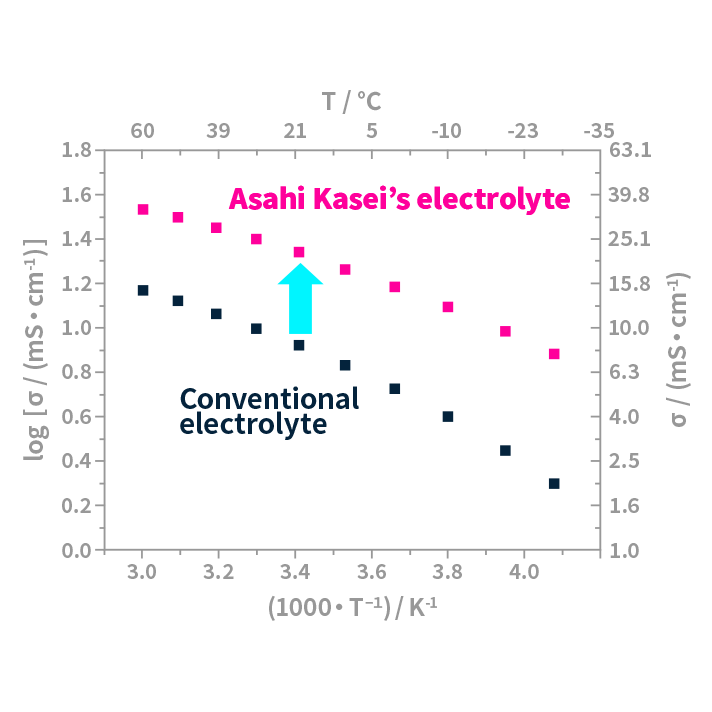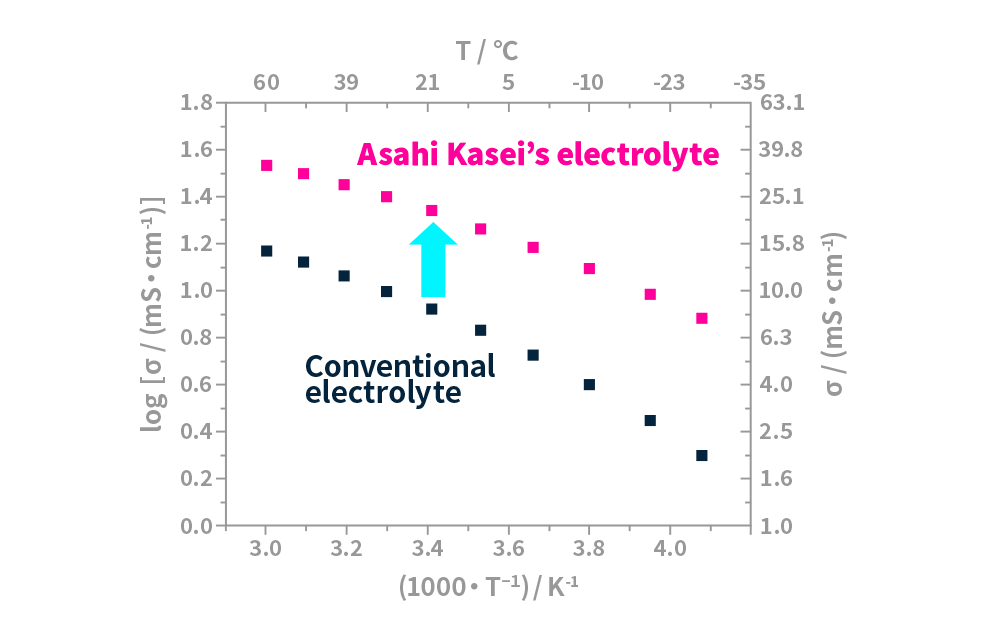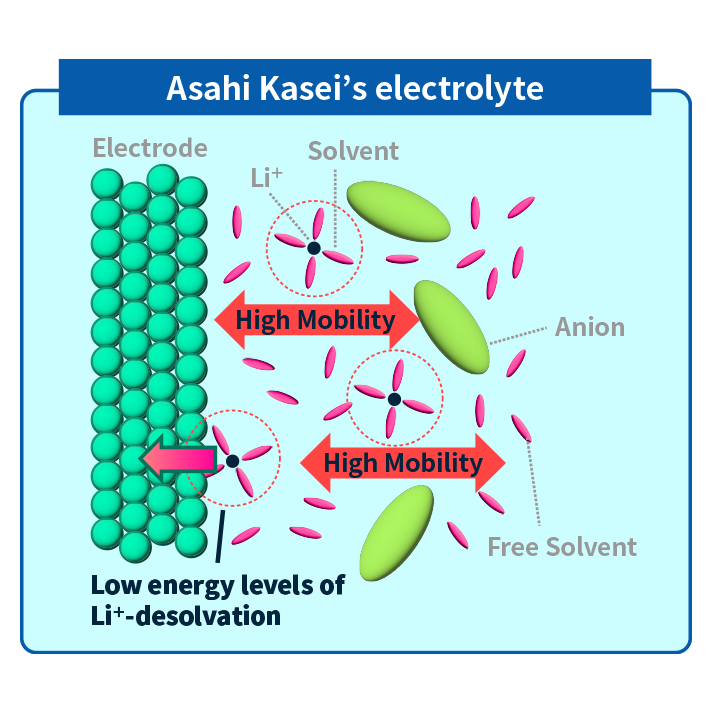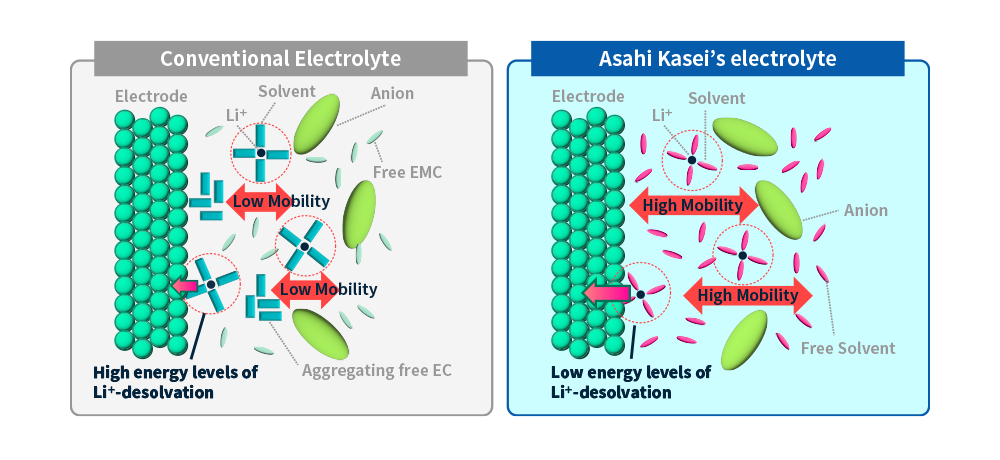Electrolyte for LIB
High Ionic Conductive Electrolyte for Lithium-ion Batteries (LIB)
- Batteries


Marketing Areas
- JAPAN
- EUROPE
- NORTH AMERICA
- CHINA
- INDIA
Our electrolyte, which demonstrates lithium-ion conductivity superior to conventional electrolytes, achieves both improved low-temperature performance and high-temperature durability.
Feature
- High lithium-ion conductivity
- Electrode/electrolyte interface control technology
- Electrolyte technology in extreme temperatures
Usage
- LIB
The increased capabilities of the battery design, from high power to high capacity, allow those utilizing the high ionic conductive electrolyte to be used in a variety of applications, from HEV to BEV. The batteries can be used safely across low to high temperatures, and their rapid charging performance improves the electric vehicle experience.
The increased capabilities of the battery design, from high power to high capacity, allow those utilizing the high ionic conductive electrolyte to be used in a variety of applications, from HEV to BEV. The batteries can be used safely across low to high temperatures, and their rapid charging performance improves the electric vehicle experience.

High lithium-ion conductivity
By focusing on ionic conductivity, which determines the input/output performance and temperature characteristics of LIB, acetonitrile has been selected as the electrolyte. The high mobility of solvated Li+ ions and the low insertion energy of Li+ into the electrode provided by acetonitrile result in significantly higher ionic conductivity compared to other electrolytes.
Electrode/electrolyte interface control technology
By creating unique conditions that allow precise control of SEI (Solid Electrolyte Interphase), Asahi Kasei has made it possible to suppress the reductive decomposition of acetonitrile. This has enabled the application of acetonitrile as an electrolyte for LIB.
Electrolyte technology in extreme temperatures
It has been difficult to achieve both low-temperature operation and high-temperature durability in LIBs. The high ionic conductive electrolyte maintains high lithium-ion conductivity even at low temperatures and has a stable SEI on the negative electrode at high temperatures. These properties are achieved by the use of acetonitrile as a solvent and Asahi Kasei's unique technology for formulating the electrolyte composition.
Improving performance at extreme temperatures
As EVs become more popular, they must be able to operate safely in extreme temperatures, such as lows of -20°C and below and highs of 50°C and above. At low temperatures, the primary challenges to EV batteries are reduced battery capacity and performance, and long charging times. On the other hand, high temperatures can quickly degrade the battery and shorten its cycle life. With this technology, LIBs can deliver superior performance at low temperatures and achieve a high charge-discharge cycle life at elevated temperatures.

Contributes to capacity increase with thicker electrode films
Extending the driving range of EVs and improving the energy density of LIBs pose a significant challenge to manufacturers. Thicker electrode films are being considered as a solution to this problem; however, these films tend to reduce the efficiency of lithium-ion conductivity. Our high ionic conductive electrolyte enables highly efficient charging and discharging even with thicker electrodes, thereby increasing battery capacity and extending driving range.
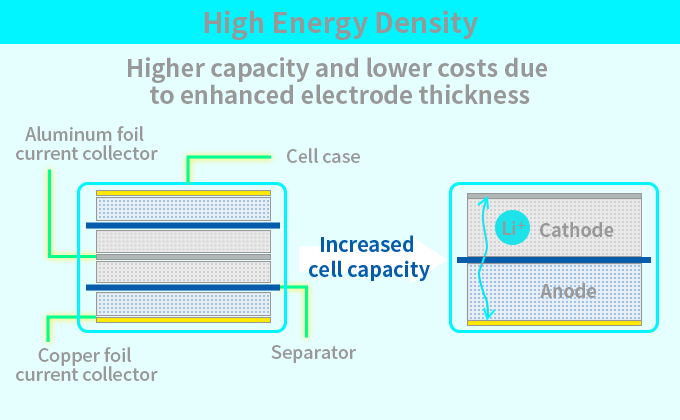
Reduces battery load, contributing to downsizing and lightweighting
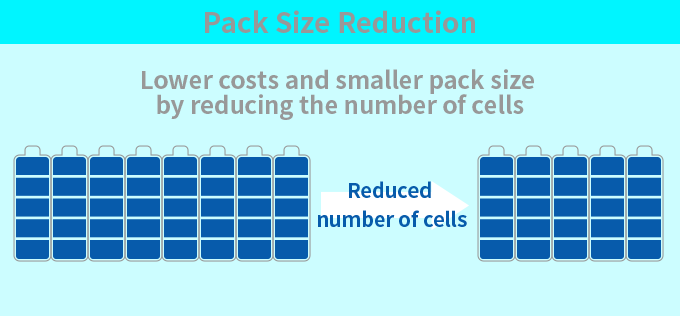
There are growing expectations for lithium-ion battery technologies related to downsizing and weight reduction. Due to its high lithium-ion conductivity, manufacturers can increase performance by implementing high ionic conductive electrolytes in the LIB. This reduces the required number of batteries installed and contributes to smaller, lighter battery packs.
Achieve fast charging
Currently, EVs take a long time to charge, which is inconvenient for the end user. Due to its high lithium-ion conductivity, our high ionic conductive electrolyte helps shorten battery charging times. This reduced charging time improves the user experience and leads the way for a more desirable product.
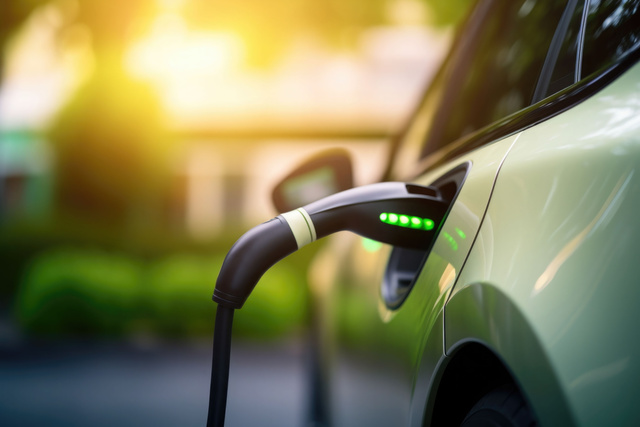
Product Q&A
QWhat are the components of this material?
QDo we need special equipment to handle high ionic conductive electrolyte?
 Mobility-related information website
Mobility-related information website
